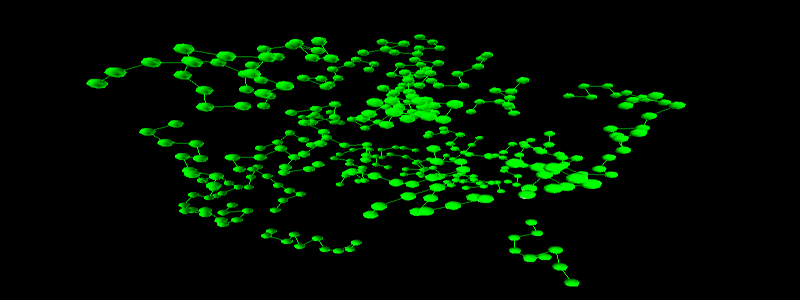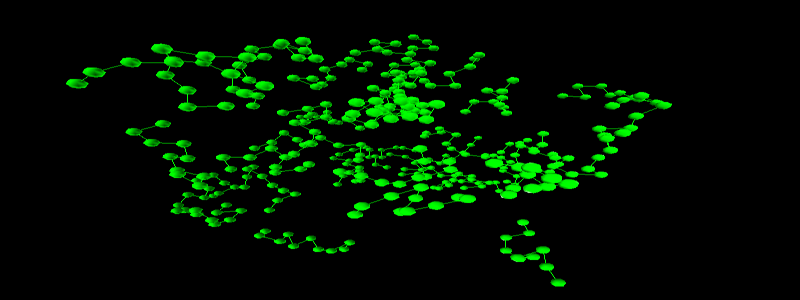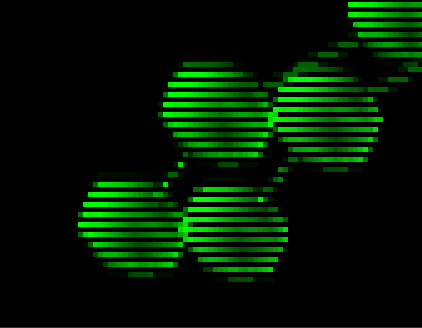Stereo Pair Image File FormatWritten by Paul BourkeJune 2000 See original pdf specification by VRex Inc: spec.pdf.
There isn't at the time of writing a standard way to store stereo pair images that meets everyone's requirements. Sure, the left and right eye can be simply stored as two individual files in any graphics format along with a naming convention to indicate which is the left and which is the right eye. In addition, many groups have designed their own way of storing stereo pairs in a single file. For example one might simply adopt a convention where the left and right eye images are formed into one image side-by-side, any software that reads this image will separate the left and right images. Of course there are a number of different ways two images can be combined, it would be useful to be able to exchange stereo pair images between systems. This document summarises one such format proposed by VRex Inc. The basic idea is to define a standard that describes the details of how the stereo pair is stored. Depending on the underlying format this might be a header, the data part of a TIFF tag type, or part of a JPEG marker. This has been applied primarily to JPEG by VRex, they use a file extension of ".jps". The JPEG marker consists of an eight bit identifier "_JPSJPS_", a 16 bit length byte, and a 32 bit stereoscopic descriptor defined below. Following this is an optional comment block, itself consisting of a 16 bit length and ascii string of characters. The description of the how the stereo pairs are stored is specified in the bitwise positions of a 32 bit quantity, from now on referred to as the "stereoscopic descriptor". This descriptor is split into two pieces, the first 8 bits indicates the media type and the remaining 24 bits indicate options. There are only two media types currently defined, mono (Ox00) and stereo (Ox01). Media type: monoThe contents of the remainder of the stereoscopic descriptor (3 bytes) are as follows.
For example, a descriptor for a full size mono image to be displayed on both eyes would have a descriptor as follows: Media type: stereo The contents of the remainder of the stereoscopic descriptor (3 bytes) are as follows.
So for example, a descriptor for a full size stereo pair, arranged over-under with the left eye image first then the right eye image might have a descriptor as follows: Header file
The field naming conventions, masks, and flags suggested by VRex are;
#ifndef __SDFLAGS_H__ #define __SDFLAGS_H__ /* sdflags.h -- general purpose stereoscopic descriptor */ /* Media Types */ #define SD_MTYPE_MONOSCOPIC_IMAGE 0x00 #define SD_MTYPE_STEREOSCOPIC_IMAGE 0x01 /* layout Options */ #define SD_LAYOUT_INTERLEAVED 0x0100 #define SD_LAYOUT_SIDEBYSIDE 0x0200 #define SD_LAYOUT_OVERUNDER 0x0300 #define SD_LAYOUT_ANAGLYPH 0x0400 /* Misc Flags Bits */ #define SD_FULL_HEIGHT 0x000000 #define SD_HALF_HEIGHT 0x010000 #define SD_FULL_WIDTH 0x000000 #define SD_HALF_WIDTH 0x020000 #define SD_RIGHT_FIELD_FIRST 0x000000 #define SD_LEFT_FIELD_FIRST 0x040000 /* Handy macros */ #define LAYOUT(f) f & 0x0000FF00 #define IS_FULL_HEIGHT(f) f & SD_HALF_HEIGHT #define IS_HALF_HEIGHT(f) !(f & SD_HALF_HEIGHT) #define IS_LEFT_FIRST(f) f & SD_LEFT_FIELD_FIRST #define IS_RIGHT_FIRST(f) !(f & SD_LEFT_FIELD_FIRST) #define FIELD_SEPARATION(f) f & 0xFF000000 /* Defaults */ #define SD_JPS_DEFAULT SD_MTYPE_STEREOSCOPIC_IMAGE | SD_LAYOUT_SIDEBYSIDE | SD_FULL_HEIGHT | SD_RIGHT_FIELD_FIRST /* Defines for SD_MTYPE_MONOSCOPIC_IMAGE */ #define SD_EYE_BOTH 0x0000 #define SD_EYE_LEFT 0x0100 #define SD_EYE_RIGHT 0x0200 #endif /* __SDFLAGS_H__ */Comments from the author
Interleaved Stereo ImagesWritten by Paul BourkeMarch 2002
Interleaving two stereo-pair images has been a often used image format for presenting stereoscopic images. The main reason for its spread has been in relation to interleaved video standards (PAL and NTSC television) which allowed stereo pairs to be transmitted using existing hardware. As higher definition stereoscopic image presentation is becoming the norm and as these other solutions become more accessible, interleaved stereoscopy is becoming less attractive. There are two main methods used to extract the stereo pairs from an interleaved image/signal and present them to the correct eye. The first which is mostly used in television and computer presentation is to wear some active glasses that alternatively switch between opaque and transparent. When the odd scan-lines are being drawn (which might correspond to the right eye image say) then the right eye of the glasses are transparent and the left eye opaque. When the even scan-lines are being drawn the opposite occurs. This does require a CRT operating is a slightly different mode from usual where the persistence of the phosphor helps to blend together the even and odd scanline images. For this mode of stereo presentation one wants a fast phosphor tube. A much more common use of an interleaved stereo pair system is for devices such as head mounted displays where there is a separate CRT tube or LCD panel for each eye. In this case the odd lines are simply sent to the tube/panel for the right eye say and the even lines to the left eye tube/panel.
Obviously, a major issue with interleaved stereo pairs is the loss of vertical resolution. As this applies to television projection it is more of a problem since the number of vertical lines is limited in the first place. Depending on how the image is being presented the left and right eye images might need to be scaled vertically so they appear in the correct proportion when presented. this is illustrated below.
Another problem is flicker from the halving of typically an already borderline frame rate for PAL and NTSC. The situation is less severe for some computer based presentation where the frames rate can be increased. Of course as one approaches rates above 100 fps then frame sequential stereo becomes more attractive. |



